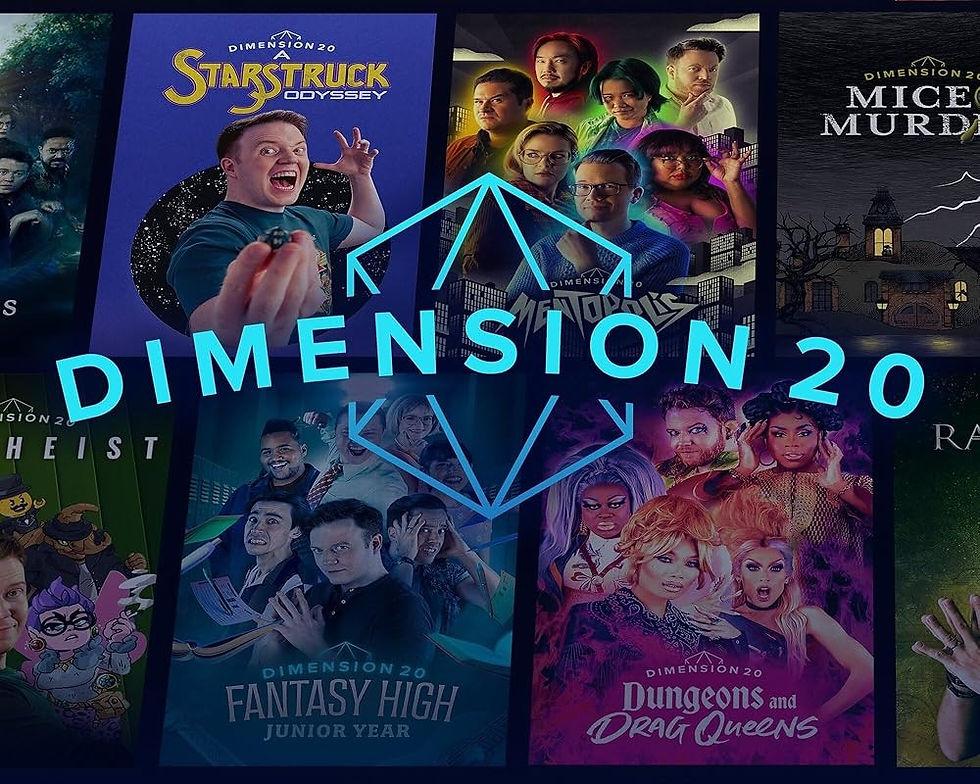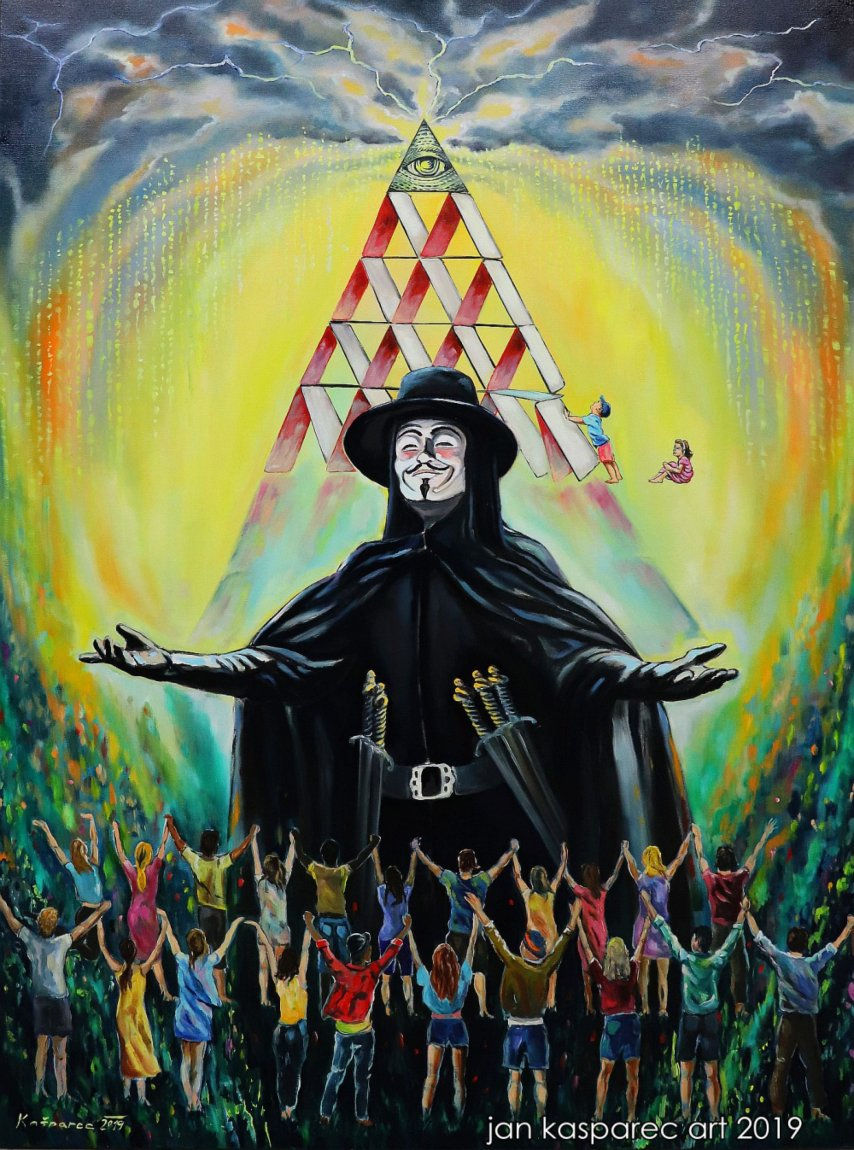Life After Gods: Critical Role IV & The Divine Cities
- zachlaengert
- Nov 4
- 4 min read
Chaos, mystery and mortal corruption
Campaign 4 & its Immediate Parallels
It's been a month since Critical Role's fourth campaign began, and like any good D&D nerd – not to mention fan of Brennan Lee Mulligan's – I've been following along religiously. (Well okay, I'm only halfway through the fourth episode, but it's a beast at over five hours long and at least half-filled with combat.)
The premiere was chock full of bird imagery, which had my fingers itching to once again start writing about similarities to Adrian Tchaikovsky's City of Last Chances. While that may still be worth a look in the future, especially for other themes I'll get to later, over time I've grown a lot more interested in the story's parallels to Robert Jackson Bennett's The Divine Cities trilogy
Warning right up top that I'm going to discuss the themes of the show so far, though I'll try to avoid spoiling concrete moments. I'll be slightly more liberal with The Divine Cities since it's a bit older and more obscure, but I hope you'll still consider checking it out if it sounds interesting to you!

Rising Against Tyranny (but not Tyranny, she seems great)
To summarize very quickly, Critical Role's new world of Aramán is defined by The Shapers' War, seventy years past, when mortals rose up and slew the gods who had created them. They were specifically led by the orcs, who wanted to follow a different path than their god of warfare and slaughter was willing to allow. The other six gods took up with their warmongering kin rather than listen to their creations, and the rest is history.
In The Divine Cities, The Continent once ruled over the world with the backing of their six gods. Seventy-five or so years ago, the small nation of Saypur managed to rise up and kill three of those gods in open warfare, allowing them to eventually come to dominate The Continent with their technological superiority. The remaining three gods are presumed dead in the present day, yet documented miracles still exist – many having been suborned by Saypuri overlords.
Which might sound familiar, if you've finished the second or third episode of Critical Role. Suffice to say that, while we've seen no evidence yet that any of the Shapers survived, it is clear that at least a few of their creations remain – albeit in altered states – and that powerful people are trying to harness them.

Brennan said in promo videos (and has proven in the first four episodes) that he wanted to explore the idea of the afterlife and its machinery with its attendant gods having been ripped away. A functional system for managing souls is a frequent tenet fantasy and Dungeons & Dragons in particular – it even makes up a not insignificant chunk of R.F. Kuang's Katabasis. Similar issues arise in The Divine Cities, where entire heavens and hells filled with millions of eternal souls vanished into the void at the same moment their gods died.
*Critical Role Speculation/Spoilers for this paragraph only*
Everything we've learned so far has me convinced that Thjazi Fang was working on a solution to the clogged afterlife – whether intending to take up the role of psychopomp himself or manifest a new being by bringing the halfling and elven (and perhaps other?) spirits together. I'll be fascinated to learn who he was working with and why it was so urgent for him to be working on it now. Add to that the fact he saw something in the sky right before he died: could there be another extant psychopomp in play, which came for him?

What Victory Looks Like // Morals & Allegories
In both stories, deicide and revolution bring temporary freedom for the oppressed before the power-hungry step up to take the reins. (This theme of post-revolution struggles is also highly relevant to City of Last Chances, as I've written about before.)
Critical Role sees the Sundered Houses taking over the very seat of revolution in the Shapers' War, secretly wielding magic of otherworldly origins while simultaneously banning arcana of any kind. It's not particularly subtle but is terribly effective to see Brennan mirroring the behaviour of the current Trump presidency in these political machinations.
The Divine Cities certainly sees Saypur as a whole prosper in their victory over The Continent's gods, but many others have paid the price in turn. Rather than ridding the world of tyranny, the Saypuri simply reversed (and arguably doubled) it on the Continent. Their murder of the gods has fundamentally warped the world in numerous harrowing ways. And much like in Critical Role, the feral remaining servants of the gods are calamities waiting to happen.
(There's one sequence in particular where Sigrud Je Harkvaldsson confronts Urav, a demigod which contains its god's hell within its stomach, that will stick with me for a good long time – and which has me strongly considering Sigrud for my third Einherjar article.)

Only one way to find out
Of course, Critical Role has only just begun, and we all know that there will be layers upon layers upon layers of mysteries to explore before we're done in Aramán. The Divine Cities trilogy is complete, on the other hand, and golly does the third book change things quite dramatically (kids, kids everywhere).
One element (heh) of The Divine Cities I loved was the exploration of the mysterious white powder thinadeskite in the second book, City of Blades. Of all The Continent's gods, Voortya, god of war, is most definitively known to have died. Yet thinadeskite seems capable of powering her miracles and much more besides – much like God Metals in Sanderson's Cosmere.
We're already seeing it a bit, but I'll be fascinated to learn the ways Aramán's people are using and abusing anything left of the divine, and what comes of experimenting with such things. What happened to the bodies of the Shapers themselves? I read a short story a while back with a perhaps relevant premise: Godmeat by Martin Cahill.
Any other stories you've enjoyed which tackle similar ideas? I'd love to hear about them!
Thanks for reading and until next time <3







Comments